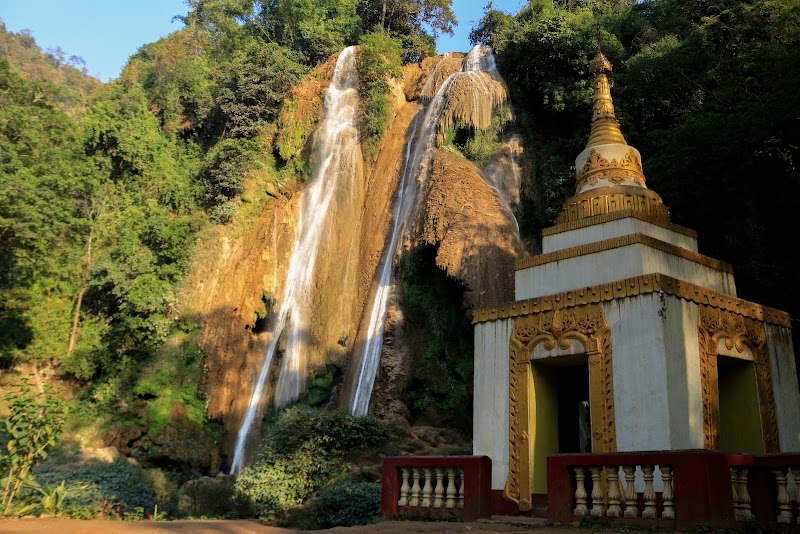
Ananda Pagoda Festival: The Heartbeat of Bagan’s Ancient Spirit
Experience the Ananda Pagoda Festival in Bagan, a dynamic celebration that transforms ancient temple grounds into a vibrant cultural hub. This guide helps you navigate the festival's rich traditions and lively markets while preparing you for the practical realities of this immersive adventure.
Wear Comfortable, Breathable Footwear
Uneven and crowded festival grounds demand sturdy shoes that keep your feet supported and cool for hours.
Stay Hydrated Throughout the Day
Temperatures can climb steadily during the festival. Carry water and take advantage of fresh local juices to avoid dehydration.
Visit Early or Late to Avoid Peak Crowds
Arriving at dawn or late afternoon allows for calmer exploration and better photo opportunities with softer light.
Hire a Local Guide for Deeper Insight
A guide can unlock stories behind the rituals and architecture, enhancing your appreciation of the festival’s significance.
Ananda Pagoda Festival: The Heartbeat of Bagan’s Ancient Spirit
In the heart of Myanmar’s archaeological gem, Bagan stands the Ananda Pagoda, a monument alive with history and fervor during its annual festival. This festival, held every January, transcends simple celebration—it is an immersive dance between centuries-old devotion and vibrant street life, inviting visitors to experience spirituality, culture, and the bustling pulse of local tradition firsthand.
The festival unfolds over several days beneath the sprawling shadows of the gilded pagoda. Pilgrims and visitors meander through temporary markets alive with colors, scents, and sounds as vendors hawk offerings from fresh flowers to handcrafted souvenirs. The surrounding grounds transform into a lively arena where Buddhist ceremonies intertwine with local entertainment, blending solemn rituals with spontaneous laughter and traditional music.
Navigating the festival grounds requires both curiosity and caution. The paths around the pagoda are compact but uneven, often crowded as throngs of devotees and tourists converge. Footwear should balance support and breathability, as participants spend hours on their feet either observing ceremonies or exploring stalls. The hot January sun can be persistent—shade is scarce, and hydration should be constant. Local vendors offer refreshing coconut and sugarcane juices, but carrying your own water remains essential.
The pagoda itself, a masterpiece of Mon architecture dating from the 12th century, demands attention not only for its golden spires but for the serene Buddha statues housed within. These statues, silently watching over the festival, act as quiet anchors amid the dynamic surroundings, inviting moments of reflection. Approaching the pagoda early morning or late afternoon enhances your experience—soft light makes the stone glow and opens spaces amid the crowds.
The festival presents photographers with dynamic material: faces alive with devotion, shadowed temple corners, and the ever-changing market scenes. To capture the full scope, a lens capable of moving quickly from wide shots of the grounds to intimate close-ups of artisans at work will serve well.
For those planning their trip, expect temperatures around 25°C to 30°C with low humidity. January's dry season is ideal for navigating the dusty dirt paths without the threat of rain but prepare for heat during the peak hours. Acquiring a local guide can deepen your appreciation, translating chants and stories embedded in the festival’s pulse.
In essence, the Ananda Pagoda Festival offers more than ritual: it is an active conversation between place, history, and people—challenging visitors to engage with something fiercely timeless yet vibrantly alive. Respect the crowds, prepare for heat, and step into a compelling cultural experience that rewards both the senses and the spirit.
Nearby Trips
All Adventures
Boat Charters
Water Activities
Adventures near Bagan, Mandalay Region
Discover the unique and memorable adventures that make Bagan, Mandalay Region special.
Frequently Asked Questions
When exactly does the Ananda Pagoda Festival take place?
The festival is held annually in January, coinciding with the Burmese month of Pyatho, typically lasting several days around the full moon.
Are non-Buddhists welcome to participate in the festival?
Yes. Visitors of all backgrounds can attend and observe; respectful participation and dressing modestly are appreciated.
What’s a recommended way to approach the crowds during peak times?
Move with the flow of people, avoid sudden stops, and keep valuables secure. Stepping aside to lesser-used perimeters can provide respite.
Is photography allowed within the Ananda Pagoda?
Photography is generally allowed in external areas, but inside the pagoda, cameras should be used with discretion, respecting worshippers.
What local wildlife might be encountered around Bagan during the festival?
Bird species such as mynas and kingfishers are common near the Irrawaddy River, adding a soundtrack to your visit.
What environmental considerations should visitors keep in mind?
Waste management is limited; bring reusable items and dispose of trash responsibly to help preserve the ancient site.
Recommended Gear
Breathable Walking Shoes
Provides support and keeps feet cool on uneven, crowded festival grounds.
Reusable Water Bottle
Important for maintaining hydration in the dry, warm environment.
Wide-Brimmed Hat
Protects face and neck from strong sun during outdoor ceremonies.
Lightweight Camera
Captures dynamic festival scenes, from architecture to vibrant crowds.
Local Insights
Hidden Gems
- "The narrow lanes behind the pagoda reveal quiet corners for reflection away from crowds."
- "Small local shrines with distinct murals are often overlooked but offer cultural depth."
Wildlife
- "Eastern Grey Hornbills and various river fish species thrive near the adjacent streams."
- "Monitor lizards occasionally sun themselves on nearby temple stones."
History
"Ananda Pagoda, built in 1105 AD under King Kyanzittha, is a key example of Mon architecture and Buddhist devotion in Bagan, housing four standing Buddha statues facing cardinal directions."
